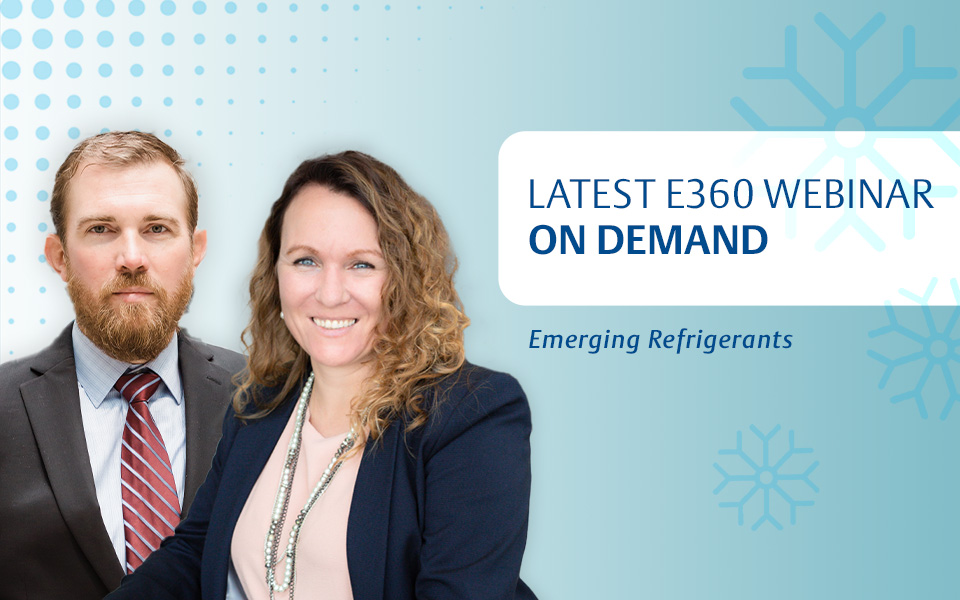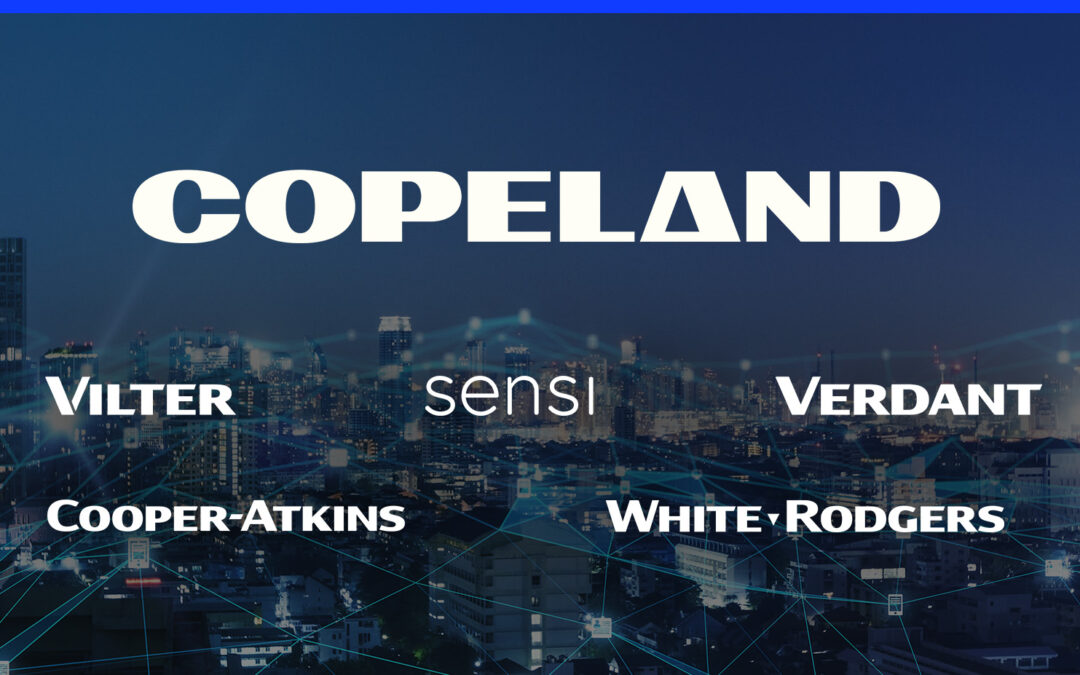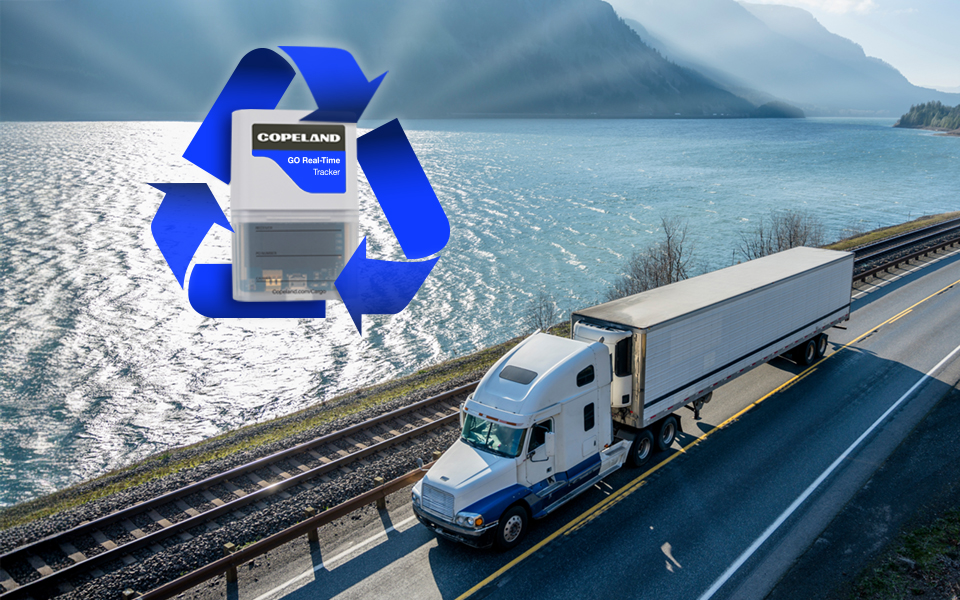*On June 1, 2023 Emerson’s Climate Technologies business became a new standalone company – Copeland. Though our name has changed, we are building on more than a century of HVACR innovation and industry leadership, and Copeland continues to offer the same products, industry stewardship, and learning opportunities you’ve grown to trust. Information found on this webpage posted before June 1, 2023 may contain our old name or branding, but you can be at ease knowing it was created with the knowledge and expertise of Copeland.
Among the many dynamic trends, challenges and decisions facing commercial refrigeration end users today, the transition to low-global warming potential (GWP) refrigerants is a core consideration. As supermarket, restaurant and convenience store (c-store) sectors work toward regulatory compliance, energy reductions, equipment electrification, reducing carbon emissions, choosing a lower-GWP refrigerant — and selecting refrigeration architectures for changing store formats — is central to achieving these goals. As part of our Journey to Lower-GWP Refrigerants E360 Webinar series, Katrina Krites, Copeland’s director of strategic marketing, and I recently provided an overview of emerging lower-GWP refrigerant alternatives and the market dynamics influencing end-user decisions.

End users have experienced a whirlwind of shifting market dynamics over the last two years. As COVID-19 reshaped consumer shopping behaviors, many corporations began setting and striving toward sustainability targets. Simultaneously, policymakers passed new rulemaking to phase down the use of high-GWP hydrofluorocarbon (HFC) refrigerants on both state and federal levels. All these factors have made the transition to lower-GWP refrigerants a central challenge facing the commercial refrigeration supply chain.
But end users have many questions about the path forward. Most are unfamiliar with the properties and characteristics of emerging lower-GWP refrigerant options and don’t know which ones align with their long-term sustainability and operational goals. They’re also seeking guidance on which refrigerant alternatives are best suited for their preferred architectures and how they can implement them safely and cost-effectively. These are some of the questions we have set out to answer in our webinar series.
Refrigerant suitability per application
When we evaluate emerging lower-GWP refrigerant alternatives, we can see how each option fills a likely niche in terms of application or architectural potential. From smaller-charge, self-contained units to condensing units and remote systems to large supermarket racks, R-290, CO2 (R-744) and A2L refrigerants all have their place. Evolving refrigerant regulations and safety standards have also helped to shape these applications, setting charge limits for R-290 (an A3 with a higher flammability classification) and emerging A2L options (with a lower flammability classification).
In addition, refrigerant regulations are establishing parameters that take GWP rating and charge size into account (see CARB compliance strategies). For now, 150 GWP seems to be the benchmark by which the next generation of refrigerants will be measured. From small to large applications, Copeland has projected how the likely transition from legacy HFC refrigerants to the next generation of lower-GWP options will take place per application:
R-290: Self-contained units in foodservice and dollar stores — With the prospect of increased charge limits on the horizon, R-290 adoption will continue to expand in self-contained applications (as much as 60 percent by 2030). Emerging A2L refrigerants may also become options in these units.
A2L: Remote systems for c-stores and foodservice — Today, remote systems almost exclusively use legacy refrigerants. With the imminent approval of A2L refrigerants in the next few years, we expect to see a transition to 60 percent of these applications by 2030.
CO2: Centralized rack systems in supermarkets — Adoption of CO2 transcritical booster technology is accelerating quickly with the emergence of design strategies that can optimize system efficiencies per U.S. climate zone. By 2024, it will comprise nearly 50 percent of new refrigeration systems (likely reaching 65 percent by 2030). As A2L refrigerants continue to be adopted, they may also be used in these rack systems.
Of course, these are market projections, but we’re already seeing the industry trend in these likely directions. In the webinar, we discussed each of these architectures in more detail, and Katrina reviewed a total cost of ownership (TCO) study that compared the relative costs of various system strategies against traditional HFC rack systems.
CARB compliance strategies
The California Air Resources Board (CARB) has been an early leader in the phasedown of high-GWP HFC refrigerants, requiring operators in the state of California to make a lower-GWP refrigerant transition before those throughout the rest of country. Katrina provided an overview of the strategies for achieving CARB compliance that include considerations for existing stores, new construction, retrofits and remodels. As food retail and foodservice retailers work against slim profit margins, they have limited capex budgets with which to make changes. These strategies can help them to maximize their available capital while achieving compliance.
Per the CARB rule that went into effect on Jan. 1, new stores with refrigeration systems containing more than 50 pounds of refrigerant must use refrigerants below 150 GWP. Existing store remodels pose a different challenge: retailers can use a combination of two strategies to reduce their carbon footprints across their store fleets in California by 2030:
- Reduce greenhouse gas emission potential (GHGp) 55 percent
- Reduce weighted-average GWP (WAGWP) <1,400 GWP
Katrina described a hypothetical scenario demonstrating how a retailer could weigh their options, calculate compliance, and select an optimal path forward. Ultimately, these early lessons learned from California retailers will help end users throughout the country as they embark on their refrigerant transitions. Regardless of where your stores are located or where you are on your sustainability journey, Copeland is ready to help you select a refrigerant and equipment strategy that aligns with your specific goals and preferences.
To learn more about preparing for emerging refrigerants or complying with CARB regulations, please view this webinar. Be sure to register for the next E360 Webinars in the Journey to Lower-GWP Refrigerants series, where we will take a closer look at each individual alternative refrigerant: A2L, CO2 and R-290.

Copeland Aligns its Family of Brands for the Future
As a critical milestone in our journey as a standalone company, Copeland is excited to unveil a...

Recycling Program Contributes to Supply Chain Sustainability
Copeland Is Your Partner for a Greener Supply Chain Throughout the perishable food supply chain,...
Industrial Heat Pumps Deliver Sustainability, Lifecycle Benefits in Food and Beverage Industry
The food and beverage industry faces increasing pressure to reduce scope 1, 2 and 3 emissions. In...
